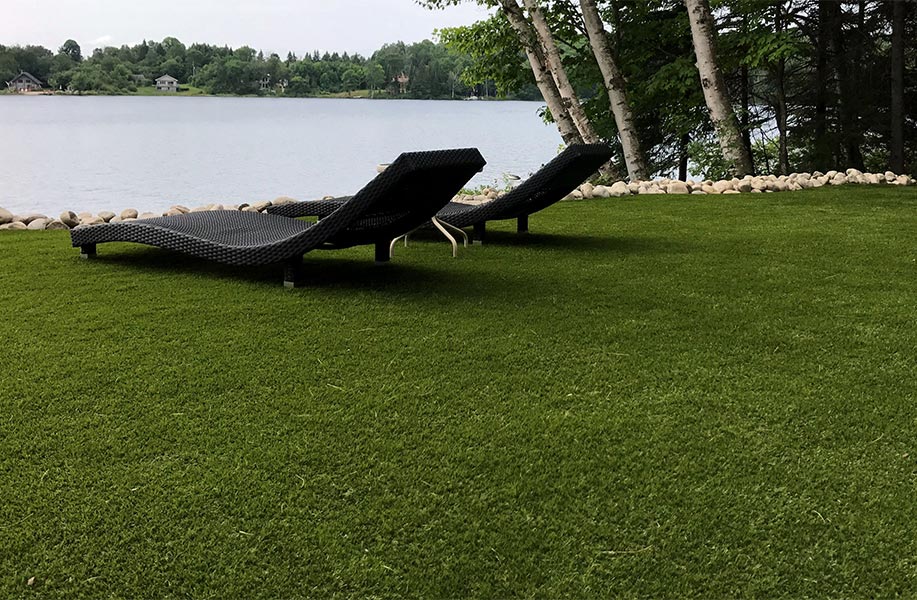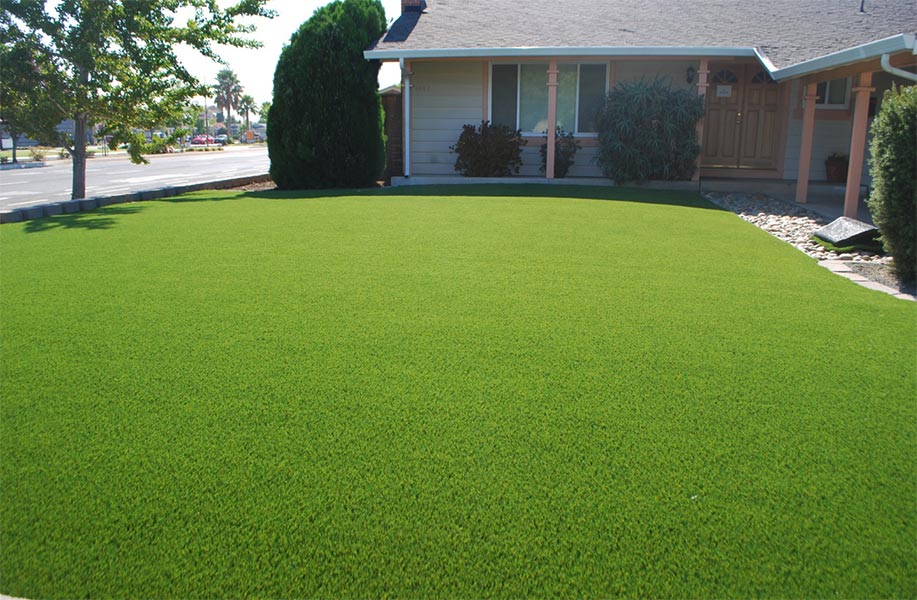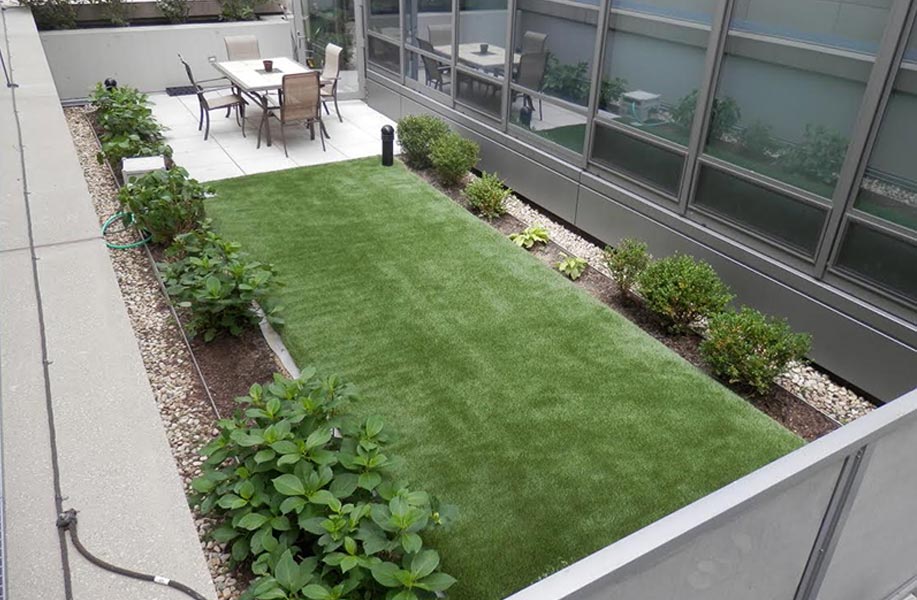
- Toll Free: 1-877-521-9014
- Phone: 416-521-9014
- Fax: 416-521-9016
- Email: [email protected]
Emerald Landscape Grass
Eco-friendly, free of lead and safe for children and animals alike, this tufted landscape grass blends a mix of light and dark green with a touch of brown for a very natural and convincing look.
Take a step towards “green living” by conserving energy and water and never having to mow or water again. No more dandelions or brown grass, just soft, UV resistant green grass all year long.
Whether you use it in gardens, for landscaping or wish to bring a little “outdoors” to your balcony or terrace, Emerald Landscape Grass is ideal.
The work is in the front end, the enjoyment is for years. It’s recommended to hire a landscape professional when using in your gardens or for landscaping.
SPECIFICATIONS
| Type: | Tufted synthetic grass carpet |
| Material: | PE Monofilament straight & PP Monofilament curled (UV Stabilized) |
| Yarn type: | 7200/8 dTex PE monofilament straight & 4640/8 dTex PP monofilament curled |
| Yarn quality: | Environmental friendly, free of lead and cadmium |
| Primary backing: | 100% PP black double without fleece. Weight 213 gr/m2 |
| Secondary backing: | Black Latex compound with a base of styrenebutadiene (SBR) with drainage holes. Weight 988 gr/m2 |
| Water permeability: | 60 liter/min/m2 |
| Pile height: | 40 mm |
| Stitches per 10cm linear: | 14.5 +/- 1 |
| Stitches per m2: | 15225 +/- 10% |
| Colour: | Mix of light and dark green + brown |
| UV stability: | Meets DIN 53387 Standard (6000 hours) |
| Colour fastness: | Xenon Test: Blue Scale > 7. grey-scale > 4 |
| Applications: | Gardens, Landscaping, Balconies, Play areas |
| Infill advice: | Silica sand, gradation 0.5 – 1.0 mm, 80% roundshaped, approximately 6-8 kg/m2 |
WEIGHT & DIMENSIONS
| Total Weight: | 2981 gr/m2 +/- 10% |
| Face Weight: | 1780 gr/m2 +/- 10% |
| Tuft gauge: | 3/8 gauge |
| Roll width: | 13’- 2” (400 cm) |
| Roll length: | 65‘- 82’ (20-25m) |
- Remove any old grass. Level the surface and spread a generous amount of building sand across the surface. We recommend approximately 5-6cm layer of sand.
- Compact the sand, sprinkle with water and level so you are left with an even surface.
- Roll out a *geo-textile and cut to size.
- Roll out the artificial grass making sure creases are evened out. The pile direction should point towards the spot from where you are most likely to view the grass. Note: If the temperature drops, it’s possible the artificial grass will shrink. The artificial grass may contract if it is laid during the day when the temperatures are between 20-25 degrees Celsius and it cools to 17 degrees Celsius in the evening. It is advised that when you lay the artificial grass, you leave 2-3 centimetres extra in length.
- Depending on the size of your area you may need to seam a section together. If you need to make a join, pull back the artificial grass and make a join between the two rolls with a Stanley knife. The black backing to which the artificial grass fibres are attached will protrude a little on both sides.These sides will need to be cut away.
- Roll out the next strip of artificial grass and repeat the same process. Lay both pieces together and check that they are properly aligned and no join can be seen.
- The width of the join between the two strips should be no more than 4mm.
- Pull back both pieces and apply the artificial grass seaming tape or adhesive tape directly under the join. Lay both pieces of artificial grass together again and carefully apply pressure to the glue with your hands on the backing of the grass. Cut the edges to the required shape or outline.
- To enhance the wear and appearance it is recommended that you spread silica sand (approximately 5 KG per m2) on top of the grass and spread with a brush or broom. This helps increase the natural look and weight it down.
*A permeable fabric used with soil to help separate, filter, reinforce, protect and drain.










